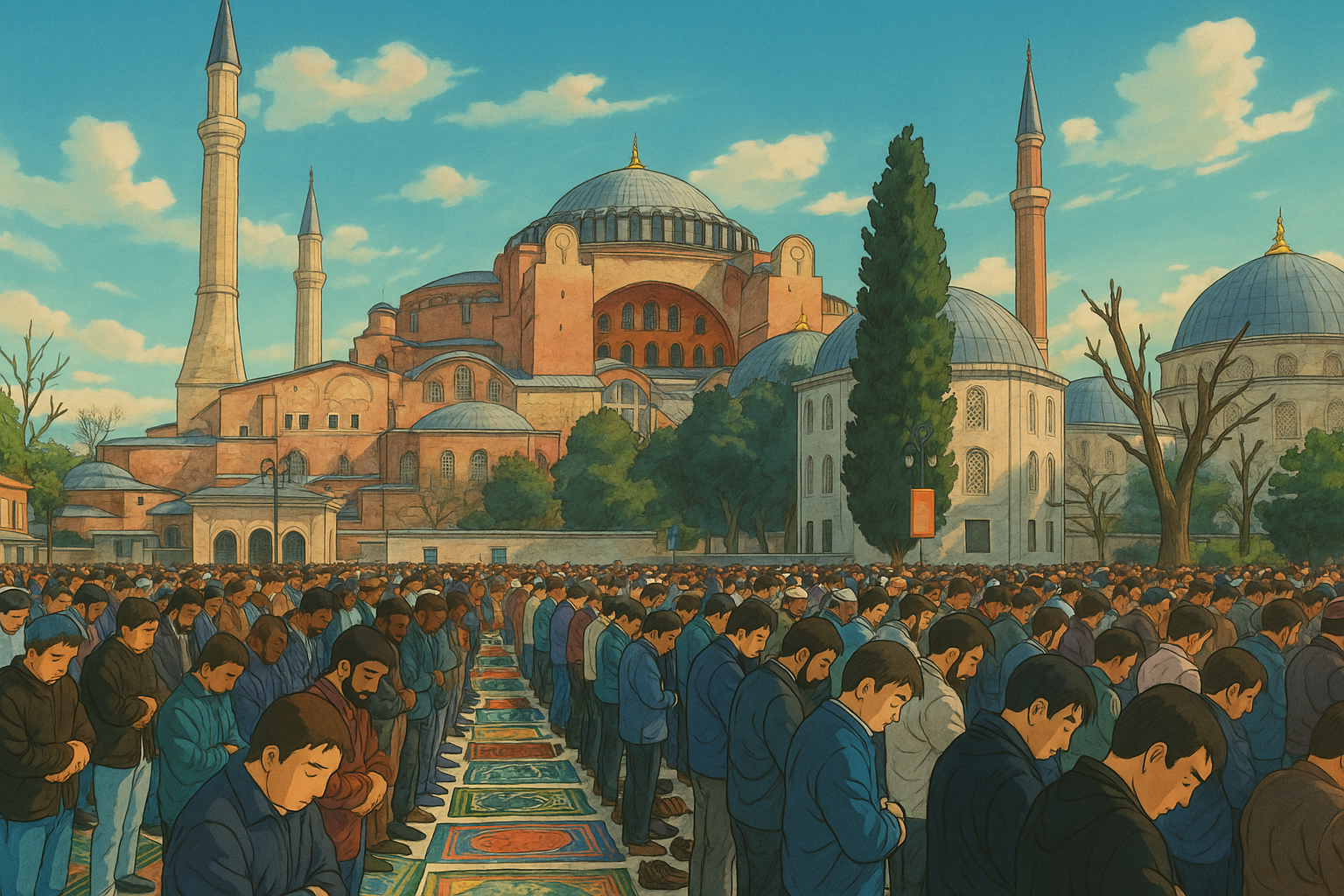Recently, social media platforms have been inundated with AI-generated images emulating the distinctive aesthetic of Studio Ghibli.
This surge in ‘Ghiblified’ content was propelled by OpenAI’s introduction of an image generation feature in its ChatGPT-4o model, which enabled users to create visuals reminiscent of the renowned Japanese animation studio’s work.
The feature’s popularity was so immense that OpenAI’s CEO, Sam Altman, reported user growth hitting a million per hour, which was impressive even for the platform’s already rapid growth rate.
While the Ghibli craze might seem like a passing trend, it highlights how quickly AI tools are becoming part of everyday life and reaching far beyond tech circles to a wide range of users.
Such rapid evolution of AI technologies amazes, enthralls, disrupts, confounds, and at times, even disgusts. Hayao Miyazaki, co-founder of Studio Ghibli, previously captured this discomfort when he condemned AI-generated art as “an insult to life itself”, which is a visceral response that reflects the unease many feel.
At the same time, the pace of these developments often outstrips the creation of cognitive, regulatory and ethical frameworks and raises issues that remain chronically unresolved.
As AI continues to advance, its impact on governance and the broader human experience demands serious attention.
Challenge to the State
AI is testing the foundations of how modern states govern, regulate, and maintain control. Policymaking is not designed for this kind of velocity or complexity, and the cracks are starting to show.
The first and most immediate threat is the erosion of sovereignty through platform dependence. Most governments today run at least some part of their digital infrastructure, whether in health, education, defense, or finance, on platforms they neither own nor fully understand.
The core compute, data storage, and foundational AI models are concentrated in the hands of a few US and Chinese tech giants.
These are not neutral providers; they are companies with their own incentives, investors, and geopolitical constraints. When a nation’s public services and institutions run on opaque foreign systems, actual control becomes an illusion.
For the Global South, this goes beyond the governance issue, which may take the form of digital colonialism.

Nations with limited bargaining power find themselves locked into dependencies where their data flows out, while algorithmic systems designed elsewhere reshape their economies, politics, and social structures.
Domestic talent is undercut, local innovation sidelined. And the infrastructure that now underpins critical state functions such as cloud platforms, model APIs, and AI-based diagnostics is ultimately leased, not owned.
With AI, states are discovering that they can not govern what they can not build. And the more integrated AI becomes, the harder it will be to untangle those dependencies without significant risk.
Sovereignty in the 21st century will increasingly be measured not just in territory or arms, but in compute, model ownership, and infrastructure control. Most states are not ready for that shift.
Elements of dependence
Under such circumstances, compute, models, and talent are emerging as strategic assets on par with oil in the 20th century. The global scramble for control is already underway, and it is reshaping geopolitics.
We are seeing the rise of compute nationalism. Access to GPUs and specialised chips is no longer a technical concern but a national security priority. States are stockpiling compute infrastructure, restricting the export of high-end chips, and restructuring supply chains to reduce dependence on rivals.
The US has already moved to block China from accessing cutting-edge AI hardware. China, in turn, is racing to build its own alternatives. Silicon is the new battlefield.
Alongside compute, talent has become a fiercely contested resource. The world’s top AI researchers are being poached by a handful of elite labs, most of which are based in the US.
The result is an enormous concentration of brainpower in institutions with growing alignment with military or intelligence applications.
For smaller states, retaining domestic talent is becoming nearly impossible. Even large ones are beginning to treat AI research as a matter of strategic depth.
Then comes model sovereignty. Foundational AI models that underpin everything from translation to targeting are becoming the digital equivalent of nuclear reactors.
Licensing access to foreign models may seem efficient, but it creates a national exposure point in the form of dependence on another state’s infrastructure for critical systems. This raises real risks of covert censorship, data siphoning, or operational sabotage.
Open source can act as a mitigating force under such circumstances. By making model code and training methods available, it becomes possible to audit systems for hidden behavior, verify performance claims, and adapt the technology for local needs without external permission.
It also encourages broader participation in research and development, reducing concentration of power and increasing resilience.
For governments and organisations concerned about autonomy, in addition to being a cost-saving measure, open source is a strategic option that reduces reliance on external infrastructure and allows for more control over critical systems.
The AI stack from compute to talent and models is no longer just a tech issue. It is the substrate of modern state capacity. The nations that understand this early will define the rules. The ones that miss it will be defined by them.

The human challenge
In addition to threatening how we govern or compete, AI is threatening how we think.
When machines trained on human content begin producing most of the content, and then future machines are trained on that output, the integrity of knowledge itself starts to decay.
AI systems are statistical engines, not epistemological ones. They do not understand meaning, they mirror it.
Once the training pool is flooded with synthetic output, the feedback loop kicks in. AI-generated text, images, and code become the material that future models are fed.
Over time, the models no longer learn from reality but from their own echo.
This is data tainting at scale. Instead of learning from grounded human experience, models learn from prior model outputs and mimic artifacts that were never rooted in the world to begin with.
In such a world, what looks like consensus may be nothing more than generative conformity.
Worse is the semantic flattening. As models generate more of our language, that language starts to sound the same, clean, coherent, and painfully average.
Originality gets optimised out. Intellectual friction, the kind that produces insight, is replaced by the smooth polish of algorithmic plausibility. It is not that machines start lying. It is that they start making everything dull.
This is a risk of slow corrosion where every downstream field may get hollowed out by prediction engines trained to mimic meaning, not produce it.
Replacing tasks and fields would rewire human cognition as well. As generative systems become the default interface for information, problem-solving, and even reflection, the slow erosion of human critical thinking begins.
There, the core issue would be dependence on AI intuition. Instead of grappling with hard questions or sitting with ambiguity, people increasingly reach for pre-packaged answers. The mental models we have and the frameworks we use to understand complexity start to dissolve.
And so, what is at stake with AI is not just political sovereignty or economic leverage, but cognitive independence itself. The ability of states to govern and the ability of individuals to reason are being pressured simultaneously, from above and below, by systems optimised for prediction and coherence.
AI will not pause. The window to shape how it integrates into society is narrowing.
If states and individuals fail to assert technical, cultural, and political control now, they will find themselves governed not just by machines, but by the interests of those who own them.
(This is the first of a four-part series on how AI is changing the world. Next: AI and the military)



















